#IS6621
Text
Snapchat: Instant image messaging app turned Sommelier? By: Shannon Foley
Snapchat first launched in 2011 as a real-time picture chatting app and has since experienced rapid growth, making it one of the most widely used social media platforms in the world. Snapchat has 360 million active users with three billion photos and videos generated everyday. Although Snapchat’s photo and video messages disappear after a few seconds, and stories expire after 24 hours, the company has proven over the past 9 years that it is not disappearing any time soon. One of the main reasons Snapchat resonated with younger audiences was rooted in concerns of their social media history getting them in trouble in their professional lives or future endeavors. People loved the simplicity of the concept and the exclusivity that came with sending private photos.
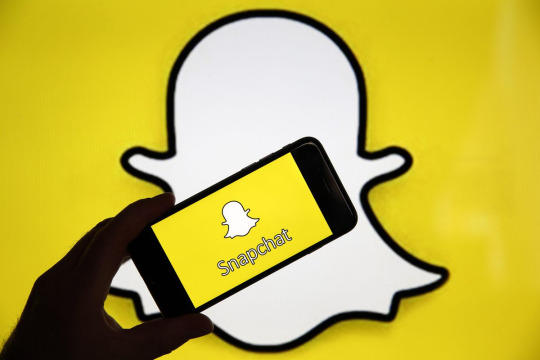
Founder Spiegel said that “Snapchat changed the perception of deleting something as bad.” The app essentially tried to model virtual conversations in the same ephemeral way that they are in real life.

Since its inception, Snapchat has evolved significantly over the years with the introduction of various features such as stories, bitmojis, snap map, augmented reality filters, and visual search functions. At its annual partner summit in June, Snapchat announced the release of additional visual search features to identify cars, plants, dog breeds, solve math problems, songs, and even products by scanning images via its camera function. Most recently, Snapchat has added the capacity to scan food and wine labels and display specific information on the products. This setting is not necessarily revolutionary, given that other food and wine specific applications already offer similar functions to show nutritional information, price rating/reviews, and tasting notes. The information on food-related labels is provided through nutrition app Yuka and the wine-labels go through the third-party app Vivino.

It was a strategically advantageous move on Snapchat’s end to partner with other applications that already specialize in food and wine and can offer accurate details and advice. This is reminiscent of their previously-established partnerships with Shazam to distinguish songs and with Amazon to look up common products. In terms of the food and wine third party apps, this is mutually beneficial. It gives brands exposure and gives Snapchat access to a range of scan options, based on credible databases, which enables users to scan a range of products to gain supplemental insight and data. This eliminates the research-intensive process Snapchat would have to undertake to collect this data. To this extent, they only have to focus on perfecting their visual search technology to ensure that its scanning and image-recognition capabilities are accurate via an easy-to-use interface. On the same note, this is an interesting way for brands to market themselves in a digitally-savvy way and simultaneously reach an extremely wide audience.

Visual search and augmented reality will continue to evolve, raising the question as to what the next stage for this technology holds. Some may project that the next logical progression would be incorporating the camera feature into glasses. However, I personally feel this is unlikely given the historical failures of so many brands to bring this goal to fruition in past years. They are very expensive and not widely adopted. Nonetheless, Snapchat seems to have a strong grasp on the complexities of image-recognition technology and seamlessly blends this with user’s daily tendencies and actions. It’s fair to assume for the most part, a majority of users perceive Snapchat as such a silly, goofy app to put filters on our faces and record comical videos of our friends. Despite this, they are a leader in social media and emerging tech and have successfully anticipated and navigated changing consumer needs to establish their presence as a social media giant today. In fact, Snapchat’s revenue reportedly increased 52% this year to $678.8 million, which is the fastest growth it has seen in three years. This is likely largely due to the increase in user screen time due to the COVID-19 pandemic. Furthermore, the company also credited the strength of its AR experiences as a critical source of revenue, “as brands sought to engage customers who were less likely to shop at retail stores because of safety concerns”. I believe that the trends and habits ingrained in consumers during quarantine will not entirely stick in the post-COVID era, but will certainly translate into their decision-making and behaviors. This means that brand marketing via Snapchat could be a very useful tool for brands to implement.
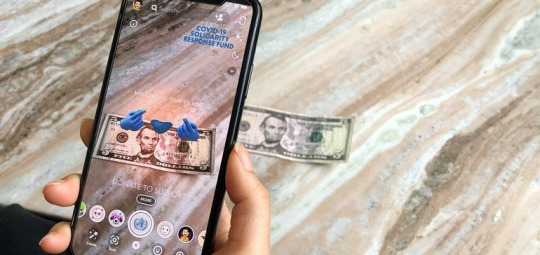
I think the incorporation of these new features is an attempt for Snapchat to remain relevant in today’s constantly evolving digital and social media landscape. For example, competing platforms such as Facebook and Instagram have released updates that seek to position them as not only a place to bolster social connections, but also function as online marketplaces of sorts. Although I think it's a stretch to conclude that people will begin shopping via Snapchat, it definitely offers interesting ways for users to engage with image recognition. This definitely aligns with Snapchat’s broader goal to add more utility to the app aside from just sharing intimate moments of one’s life and communicating quickly with friends and family.
https://www.thestreet.com/technology/history-of-snapchat
https://medium.com/ipg-media-lab/fast-forward-what-we-learned-from-the-snap-partner-summit-2020-bf769165fc81
https://www.socialmediatoday.com/news/snapchat-adds-new-barcode-scanning-capacity-for-selected-products-providin/587596/
https://wersm.com/you-can-now-scan-food-and-wine-labels-on-snapchat/
https://www.engadget.com/snapchat-scan-food-and-wine-labels-130019011.html
https://www.socialmediatoday.com/news/snapchat-adds-new-barcode-scanning-capacity-for-selected-products-providin/587596/
https://www.mobilemarketer.com/news/snap-revenue-surges-52-as-direct-response-ar-ad-offerings-pay-out-during/587423/
https://www.socialmediatoday.com/news/snapchat-adds-new-barcode-scanning-capacity-for-selected-products-providin/587596/
7 notes
·
View notes
Text
Living LFS Social Media Strategy
We’ve reached the end of this course (plus a little) and I’ve learned a lot about how social media can be not only an important part of a non-profit business, but an overall strategy to drive towards our organization’s goals.
At Living LFS, we encourage, empower, and educate those living with Li-Fraumeni Syndrome (LFS) by connecting them with care, resources, and others who are Living LFS.
Li-Fraumeni Syndrome (LFS) is linked to a mutation in the TP53 tumor suppressor gene. There are many types of TP53 mutations. People with this mutation have a higher risk of developing cancer over their lifetime. LFS affects each individual differently, even within the same family. Some families with LFS have higher rates of cancer incidence, while others do not. Nearly 100% of women with LFS get cancer in their lifetimes. Men have a 70% or greater chance. It’s our mission to make sure families living withing the LFS blast radius get the care, information, and sense of community that they need. Receiving an LFS diagnosis is both devastating in its impact and isolating in its rarity.
How does this align with Social Media? Our founder Jen Mallory was diagnosed with Li-Fraumeni Syndrome and metastatic breast cancer in 2012. At the time, there were only thought to be 400 families with LFS in the world. Realizing the importance of connecting these isolated families together and advocating for this rare disease she started a Facebook Support Group in 2013. As the group grew, she founded Living LFS, and it was registered as a 501c3 non-profit in 2014.

Jen posted blogs, connected with other families, and built a board of directors. Together the board held fundraisers and sold branded merchandise. They began attending advocacy events in places like Rare Disease Week in Washington DC and provided travel scholarships to LFS specific events. Living LFS continued to grow but has gone through its ups and downs as its board of directors is made mostly of patients who are often “cancering”. Jen herself became sick stepped back from the posts, and stepped down as president of the organization. She left enormous shoes to fill and we needed a plan. That’s where this class came in.
The first thing that really opened my eyes was the TOFU, MOFU, BOFU marketing funnel.
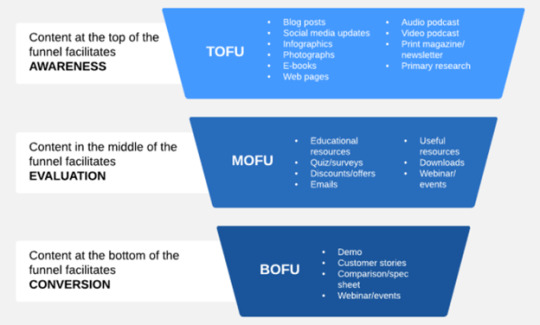
After looking at the funnel the first thing that came to mind was the question “what are we actually trying to do?” or "What does conversion mean for us?”. After reflecting on it, to us, conversion means three things
1) Families found our support group and connected with others
2) A person donates
3) A person signs up for volunteering
The next step was to understand who exactly our customer was. When we started doing this we noticed a few things. First, the most active people in the group, on our social media pages, and within our volunteer ranks were women.
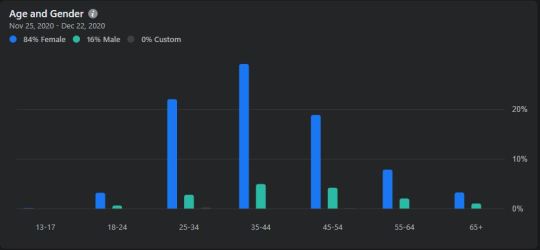

Second, the people were mainly from the United States but interestingly also in Australia and the UK.

And finally, we really did a terrible job at keeping track of who our donors were.

Overall the social media strategy will have two main paths. The first is to ensure that all of our social media accounts are pointing to our Facebook support groups.This ensures that the people with Li-Fraumeni Syndrome are connecting with other families and can get the information and care that they need. This also serves as the eco-system to pump all of our fundraising, campaigning, and other information through.
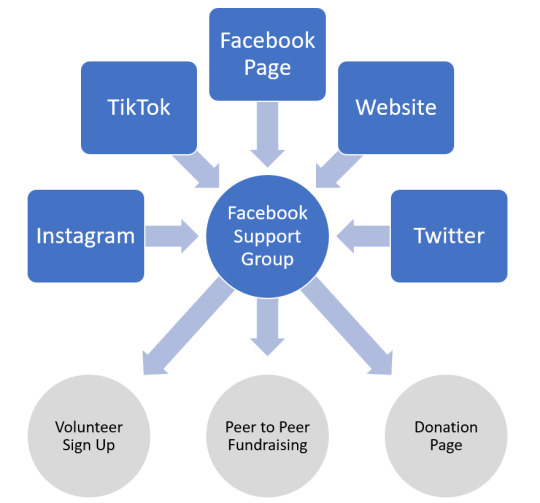
The second was ensuring that people found our website through google and that our website directed people to our volunteer signup, fundraising, support groups and donation pages.

Now that we evaluated who our end conversion customer was we decided to look at how we did against each of the items listed in the funnel at each of the steps. After going through the entire list we created actions which will translate into our 2021 goals.
Before even getting through the first layer of the funnel we can see how the number of blogs and our content has fallen off over the years.
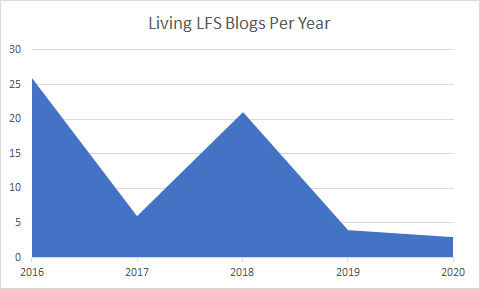
The actions from the TOFU section were all around getting our content going and distributed through our social media channels described above.

We found that we had a very limited prescense on Twitter and zero existance on TikTok. Luckily during the semester we found a woman on Tiktok who has agreed to volunteer and we’re just launching our tiktok account. She has also agreed to take over our twitter account where there is a large medical community presence that we can leverage.
View this post on Instagram
A post shared by Living LFS - Li-Fraumeni (@livinglifraumeni)
The other part of the funnel which we addressed this November was going live with our new donor management platform called network for good. I realized that we have very limited data on our donors and that it was spread across many platforms including paypal, physical mail, facebook, and venmo. We consolidated all this data into one place. This also allows us to say thank you much easier.
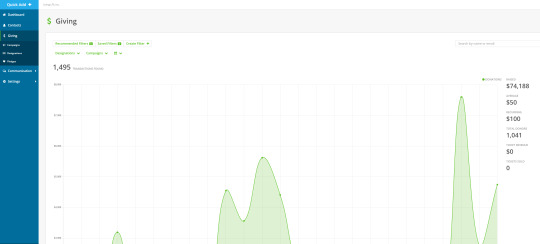
In the MOFU section of the review we found that we really need to just broadcast the information that we have in a better way. We have a ton of content that sits and is stagnent. The new donor management platform will help us with email blasts for both new and old donors and famililes. We can build many of these actions into our board approved goals for the year.

In the final section we will focus on conversations. Once we have people funnelling into the group we need to take advantage of their willingness to help. We have tons of volunteers and have historically struggled to manage them. The new donation platform allows for peer to peer fundraising where people can manage their own fundraisers without the need of much assistance from the board.

So we have a plan for the future now. A plan that we will make sure that Jen’s vision guides every decision we make, but with a little more structure and thought behind it. On Saturday we had a memorial for Jen where all said goodbye but we know that her vision and passion to support those with LFS will carry on in everyone who is a part of Living LFS
1 note
·
View note
Text
Sustainable fashion & thredUP – “Secondhand Clothes. Firsthand Fun” | Sabrina Didizian
We all hear that we should walk instead of drive when we can, turn off the lights, take shorter showers, and recycle when possible. However, the negative impact that the fashion industry (especially the fast fashion industry) has on our environment is only recently being highlighted. BUT, most people are still very unaware of this. We seem to have taken for granted that we can buy clothes that have been made cheaply and quickly at low prices. We seem to want to keep up with the ever-changing fashion trends, and stores want to produce and supply for that demand. But at what cost?
The growth of the multi-trillion dollar apparel industry has in more recent years been ‘fed’ by fast fashion. What used to take several months for a garment to reach a customer from the designer now takes sometimes just a couple of weeks. Even more, the number of fashion seasons has gone from two a year (spring/summer and autumn/winter) to as many as 50-100 microseasons. These fast-changing trends and low prices have therefore meant that people can and do consume more. In fact, “according to McKinsey & Company, the average consumer in 2014 purchased 60% more clothing compared to 2000, but each garment is kept half as long”.


With the loss in quality of garments, consumers have lost the ability to repair their clothes - the reduction in the cost of clothes has actually made it cheaper to buy a pair of socks than to darn them! This has resulted, paradoxically, in increased expenditure on lower-quality clothes. And although people think that they spend less money overall by buying from fast fashion stores instead of more expensive, higher-quality brands, it is actually the opposite. Not only have our over-indulgent buying habits caused us to become lazier, more demanding and have made us spend more overall on lower-quality clothes, but they have also contributed enormously to climate change and the deterioration of the health of our planet.
Serious water use and pollution take place during clothing production. “The world uses 5 trillion litres of water each year for fabric dyeing alone, enough to fill 2 million Olympic-sized swimming pools”. And according to the Ellen Macarthur Foundation, “textile production produces 1.2 billion tonnes of greenhouse gas every year”, and the UN has estimated that “10% of total global emissions come from the fashion industry”. Unfortunately, the trend of buying and disposing is likely to continue. Consumers are now so used to that level of consumption that it would be so difficult for the microseason-shopper to stop, let alone reduce, their destructive buying habits.

People think that throwing away their clothes in the bin will have no effect; however, “disposed clothes also contribute to greenhouse gases as they sit in landfills”. Additionally, “only 15% of clothing is recycled or donated. Synthetic fibres, which make up at least 60% of our clothes, are non-biodegradable and sit in landfills for hundreds of years” and they also release microplastics into the water system when washing them.

There are some things that we can do; however, to help with this enormous issue on our hands. One thing we can do is to simply stop buying fast fashion. Another one is to just try and re-wear what we already have. I bet so many of us have so many clothes that are hidden somewhere in our closets and if we went through our closets every now and then, we’d definitely find some hidden gems that that we completely forgot about! We really don’t need to buy a new item for every occasion or every season, let alone microseason. Another thing we can do is commit to only buying clothes made of non-synthetic or sustainable materials like cotton, bamboo, hemp etc. Or, many companies are now making their clothing, or parts of their clothing lines, out of recycled plastic from the ocean or water bottles. One other way is thrifting, which I’m sure many of us are aware of because of how much cheaper it is. But not as many are aware of how much better clothes second-hand is for the environment. Buying second-hand gives clothes new life that they would not have been given and it creates less demand for creating new clothes, which no matter how sustainably made, producing something will always have some kind of impact on the planet.
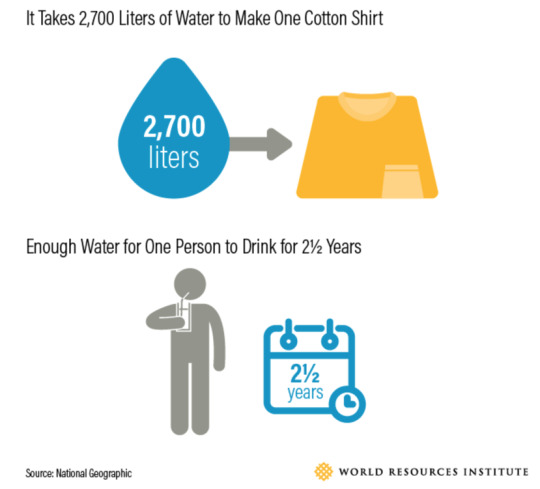
One company that is making thrifting/second-hand shopping easier than ever is thredUP. It’s the largest online consignment and thrift store that has made it easier than ever to sell and buy second-hand clothing, jewellery, purses, shoes and accessories online. They sell and take items from brands like Lulu lemon, Gap and Zara to Diane Von Furstenberg and Michael Kors, all up to 90% off their retail price. They also have over 35,000 different brands to choose from. With regards to sustainability, on their website they state:
“It matters that we throw 26 billion pounds of clothing into global landfill every year. It matters that fashion will drain a quarter of the world’s carbon budget by 2050. It matters that a single T-shirt takes 700 gallons of water to produce. The choices we make matter. To our planet. To our kids.”

thredUP is on a mission to “inspire a new generation of shoppers to think second-hand first”. thredUP has actually “redistributed 65 million garments to date”. That’s a staggering statistic!!!
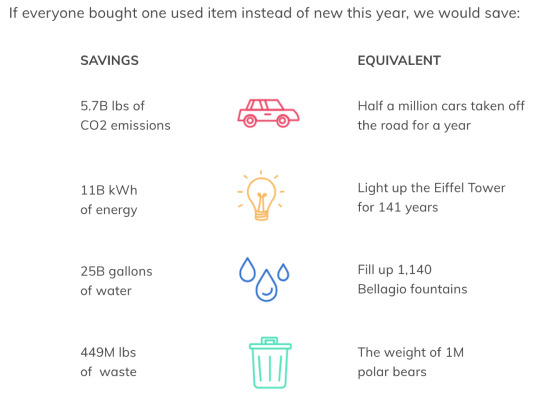
I chose to focus part of my blog post this week on thredUP because I see is as the future of what digital businesses and technologies should and will be like. Without the internet and technology, this concept would obviously not be able to exist, so I see thredUP as ahead of their time and a beacon of hope for using technology for creating positive change. We must all obviously initially change our mind-sets and spending/consumption habits and get over the scepticism towards second-hand purchasing. Why buy something new when it already exists, and you can buy it for a fraction of the price!? Once we get over this hump and change our perspective, it really will open a whole new world when it comes to feeding our desire for more in one of the most sustainable ways possible in a modern world.
Sources:
https://www.wri.org/blog/2017/07/apparel-industrys-environmental-impact-6-graphics
https://www.thredup.com/
https://hellohomestead.com/the-impact-of-textiles-and-clothing-industry-on-the-environment/
7 notes
·
View notes
Text
Assembly Bill 5 Please Don’t Take Away My Favorite Apps; Just a Consumer’s Perspective
What’s Assembly Bill 5? It is a bill that California Gov. Gavin Newsom signed into legislation Wednesday, September 18th, 2019 and is effective Jan 1, 2020. In short, the bill redefined the rights of independent contractors so that they can have the same state rights as employees. These rights include, state minimum wages and benefits. This would change Lyft, Uber, Door Dash, and potentially Air BnB’s business models. Uber, Lyft, and Door Dash have banned together to fight Assembly Bill 5 with $90 Million and a ballot-measure. All and all who knows how it is going to work out. All I can picture is the debate room on this one…

Just kidding, I use all these apps and have a lot to say about what will happen if we roll back time.
Round 1: Door Dash vs. Regular Delivery Guy
The thought of losing door dash makes me think....

Sure, seeing the status of your delivery is great and having all the food in a centralized location is great. But is it really that convenient? Googling sushi restaurants in Boston and logging on their website is pretty simple. Almost always, they allow you to save your card on file, place and order online, and call you when they show up. If you don’t like that option, you can just call your order for delivery which is simple too. Besides I still can’t get over that one time I looked up how many chicken wings I was supposed to receive and realized the Door Dash driver at my food! It would be a lot less likely with an employee that represents the restaurant. All you need to see below is 1 in 4 folks!
https://nypost.com/2019/07/29/more-than-1-in-4-delivery-drivers-eat-your-food-order-study/
1 point goes to assembly bill here!
Round 2: Ride Share Apps vs. Taxi’s
Ride share apps vs. Taxi Companies
I will feel more like Daenerys without her dragons if Ride sharing goes away…

Look, this just doesn’t make sense. Every Uber and Lyft driver I talk too is doing it because they love the flexibility and being their own boss, A.K.A. a subcontractor! Secondly, do you know how many people go out of their way to Uber places when they are drinking so that they don’t have to drive drunk? 34% decrease in drunk driving convictions from 2015-2017 in Georgia.
https://www.rstreet.org/2018/11/08/the-uber-effect-on-drunk-driving/
Pretty much everyone Mr. Governor, since Uber and Lyft came out you would have to be a psycho to get behind a wheel while drinking. Lastly, shared rides must be better for the environment. If we go back to Taxi’s we will have the same highly controlled, concentrated, smelly, inefficient, and expensive Taxi transportation service. Please don’t. Here is a potential solution, change the tax laws to give the drivers breaks for their work saving lives and the earth.
1 huge point goes to Share Rides here!
Hotels vs. Air BnB
No No no no no no no no.
Okay first off, what many people don’t understand is that Hotel’s like Marriott or Hyatt typically don’t own the property they just manage it. They do a very nice job at all their hotels and I appreciate them in the market. However, for us young broke consumer’s their prices are not realistic. So, what is option 2 in the hotel industry. Low budget hotels like red roof inn, holiday inn, or Double Tree. In Boston, these will typically run you between $99-$200 a night for a 1 bed room. Meanwhile, $109 a night gets me this on Air BnB.

This one isn’t really about employees getting paid either. Yes, a lot of budget hotel chains will close if they have not already because of Air BnB. However, the employees have the transferrable skills to work at the upper end Hotel Brands too.
1 more point goes to gig economy.
Giving the gig economy the win with 2 points and the Assembly bill 1 point.
4 notes
·
View notes
Text
Mmm Thats Looks Delish: How Instagram is Changing the Restaurant Industry -Allie McNabb
For a lot of millennials and gen z’ers, Instagram is used as a platform to showcase cool experiences, family photos, and personal mementos from their daily lives. Depending on the user this could mean posting inspirational quotes to live by, reposting funny videos, or simply posting a pic from a night out with friends. As social media trends continue to shift however, Instagram is no longer being seen as just an app used to publish pictures. Companies, brands, and individuals are utilizing the platform to boost recognition and sales through visual engagement with the end consumer. This strategy spans across several industries, but I believe the food industry has experienced the greatest impact both in a social and business sense.
Have you ever been out to eat at a restaurant, about to take your first bite of an amazing looking meal placed in front of you, when all of the sudden your friend chimes in with a persistent, “Wait! I HAVE to take a picture first!”. Well, if you haven’t ever been in this situation in your life, then you have somehow managed to avoid the overwhelming trend to share your food on social media, congratulations! As the ‘phone eats first’ movement has become increasingly more popular, the landscape of content, as well as the variety of active users on Instagram have changed. “Smartphones have become participants in the meal”, and this shift has established foodstagrams, food bloggers, and restaurant accounts, in their pivotal roles in the decision-making process of consumers (Restaurant Manifesto). Regardless of taste, people are drawn in by the aesthetics of their meal, influenced not only on by the food itself but by the plating and atmosphere surrounding the dish. While this sudden influx may not appear to do anything but make you hungry from scrolling through your Instagram feed, many users take advantage of these resources when making important decisions about food.

One of the most painstaking decisions we’re forced to make on a daily basis is deciding what to eat and where to eat it. Often times, when looking for a new restaurant to try, similar menus and reviews online appear to morph into each other, leaving the most indecisive consumer left to squander on their own. Instagram, however, gives users the ability to see the restaurant and their food options, without even stepping a foot in the door. Along the same line of reasoning, once customers decide on the restaurant, the ability to see their food before they even order it can eliminate the common panic when deciding between two equally delicious-sounding options at a restaurant. Although other platforms utilize customer-taken photos and reviews, enables their users to share their food experiences through a more personalized approach.
Why does this matter to restaurant owners? Not only does Instagram have the power to influence where the consumer may choose to buy a meal, it also has produced changes in whatconsumers want to eat and the atmosphereof where they’d like to eat it. Restaurant owners are taking note of these shifts in consumerism, adjusting their menu items to include sensations such as the “freakshake” and “selfieccino” (BBC). But it doesn’t stop there, restaurant owners have begun making other business decisions with Instagram in mind, citing the benefits to their bottom line. Details as simple as the wallpaper and countertops drastically impact a restaurant’s social media presence by creating those “Instagrammable moments” in which patrons can interact. Making these changes seem drastic to certain business owners, but the results are in the pudding. Samantha Wasser, successful co-founder of the restaurant by Chloe, concluded that a strong Instagram presence can lead to higher check averages because consumers want “to try everything they had seen before” (Fundera). When it comes down to it, Instagram is another tool restaurant owners can use to bring customers into the door, and with millennials dining out 20% more than their generational predecessors, it is imperative to capture this part of the market.
So, while some people fail to see the value Instagram brings to the restaurant and food industry, in the end the old saying,
people eat with their eyes,
still rings true, and Instagram is enabling business owners and consumers to utilize it for their own benefit.

Sources:
https://www.bbc.com/news/uk-england-london-42012732
https://spoonuniversity.com/lifestyle/how-social-media-has-changedthe-way-we-think-about-food
http://www.restaurantmanifesto.com/phone-eats-first/
https://www.theguardian.com/lifeandstyle/2016/nov/02/click-plate-how-instagram-changing-way-we-eat-food
https://www.fundera.com/blog/instagram-restaurants
4 notes
·
View notes
Text
The Staying Power of Internet Challenges: The ALS Ice Bucket Challenge 5 Years Later By: Emily Jennings






2 notes
·
View notes
Text
Hey Facebook—Am I Pregnant?
By Amanda Hassett
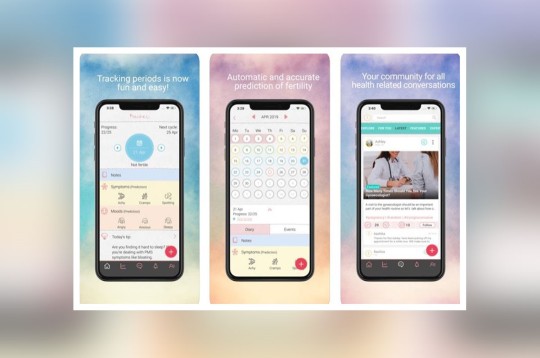
Everyday consumers are inundated with promises from emerging technologies to help make our lives easier—Amazon can deliver almost anything, Uber has revolutionized local travel, and Open Table has taken the headache out of finding dinner reservations on a busy Saturday night. Most consumers embrace the convenience of these technologies without much thought to the consequences of the information they are sharing and who has access to it. We trust firms to handle our private information with the utmost care and respect for privacy…but what happens when that is not the case? Privacy International, a UK advocacy group, shared a report this week which detailed period and fertility tracking apps, most notably Maya and MIA, have been sharing a wide range of highly personal and sensitive information with, of course, Facebook…
Millions of women around the world have embraced these apps to help track their menstrual cycles and monthly fertility windows. For the app to provide the most accurate results for its user, it relies on women to input a wide variety of personal data including, daily mood, sexual activity, contraception usage, and symptoms such as tiredness and even acne breakouts. Thanks to Facebook’s Software Development Kits (SDK), a product which allows app developers to track analytics and monetize their apps through Facebook’s advertising networks, the information inputted by its female customers was shared directly with the social media juggernaut for strategically ad targeting. The major criticism lies in the fact these apps were not forthcoming with their use of the SDK and certain customer information was shared with Facebook before users even had an opportunity to review and agree to the apps “terms and conditions.”
Once again, the world’s largest social media platform with 1.2 billion daily users, finds itself in the middle of a user privacy debacle. After last year’s Cambridge Analytics scandal along with other accounts of misinformation, allowance of fake accounts, and consumer breaches of trust, Facebook has attempted to take steps in better protecting its users’ data. In a statement responding to the Privacy International report Facebook offered:
Its terms of service prohibit app developers from sharing health or sensitive data, and that it has been in contact with Maya and MIA to notify them of a possible violation of those terms. We have systems in place to detect and delete certain types of data such as SSN, passwords, and other types of personal data. We have begun looking at ways to improve our system and products to detect and filter out more potentially sensitive data…
With apps not being held to the same standards as the health care industry in terms of patient/user privacy, serious concerns have been raised over who ultimately has access to this type of data and the oversight of properly securing it.
It’s not just advertisers who’d love to get their hands on this type of medical data, but employers and insurance companies have aggressively pushed to collect more and more data on their employees under the guise of corporate wellness. Imagine if a potential employer had access to medical information for job candidate which confirmed she was actively trying to get pregnant, how many firms would not hire her to avoid the complexities of having an employee on maternity leave within her first year at the firm…? Access to this type of data would allow insurance companies to discriminate against certain women by charging higher premiums for those most likely to conceive to offset the costs associated with pregnancy, delivery, and post-partum care.
Customers have placed trust in apps like Maya and MIA with their personal health information and fully expected it to be protected and secured. In today’s data-driven society, firms go through great length to collect all available data on their customers to gain awareness and achieve a competitive advantage. Is it even reasonable for consumers to have expectations of privacy or do companies need to step up their data discretion game and start showing more respect towards their customers?
Ladies, if data sharing like this have you seriously concerned there’s nothing wrong with an old school calendar stored in your nightstand to help you keep track of your personal business…just sayin’.

Sources:
https://www.bbc.com/news/technology-49647239
https://www.buzzfeednews.com/article/meghara/period-tracker-apps-facebook-maya-mia-fem?utm_source=dynamic&utm_campaign=bffbbuzzfeed&ref=bffbbuzzfeed
https://www.washingtonpost.com/technology/2019/09/10/these-apps-may-have-told-facebook-about-last-time-you-had-sex/?arc404=true&noredirect=on
2 notes
·
View notes
Text
The Year of the Microtransaction
By: Sadeke Kidane Walsh

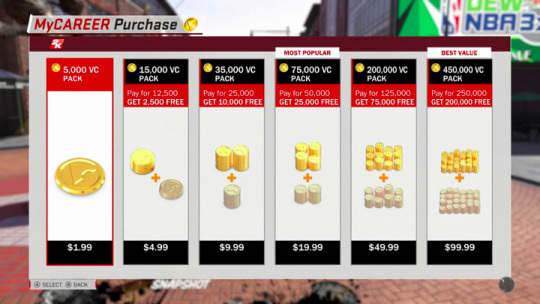



1 note
·
View note
Text
Have Influencers Changed Instagram Completely? - Francesca Venezia

Real life people who get paid to travel the world, blog, and promote products and companies? Who wouldn’t want to sign up for a job like that? Sounds awesome, but don’t let it deceive you! More and more people have labeled themselves as “influencers,” but what exactly does it qualify to be an influencer? The influencer index is a valuation algorithm that takes different aspects into consideration such as the relevance of direct or indirect connections, and how these users influence their followers. Below is a chart that shows other aspects looked into to see if a person has “blogger influence.”

On Instagram today, the number of influencers keeps increasing. People want to “brand themselves” and show others what is most meaningful to them, however, people are being paid to promote products. You must be asking yourself, “How truthful can Instagram posts from these influencers be, if they are being paid to say what is wanted from that company?” This concern is calling into question the truthfulness of Instagram today.
As mentioned in class the other day, Instagram originated in October of 2010 purely as a photography app. The name Instagram came from the idea that users would be “sending a type of instant telegram.” Therefore, a user would open the app, take a picture, perhaps edit the picture through one of the filters provided on Instagram, add a caption, and post it. This realness of posting from the exact time the picture was taken is drastically contrasted from the way in which Instagram is used today.
People today use Instagram as a way to “brand” themselves- either truthfully or not. While it is not intended by users to portray their life in a way that is deceiving to their followers, it happens naturally because of the way people conform to society. In addition, throughout the years Instagram has added features to help connect people with others they follow. Even more so, Instagram now suggests people based on similar content that it thinks a person might want to follow, which is known as the “Explore Page” and “Suggested for You.” The idea of sharing images exactly from the moment has become less common, as posts and even some stories are typically planned out in advance. Planning out these posts are the result of trying to live up to the same standards seen on other people’s Instagram pages. The ring leaders of this you may ask? … Influencers.

Influencers have impacted Instagram by the way they use the app, ultimately changing it completely. By posting the “best” content, they influence others to post the best pictures of themselves or pictures they desire their lifestyles to seem like. In many cases these pictures posted on users’ accounts are not entirely true to a person’s life, which was not Instagram’s original intention of its purpose when creating the app. Instagram’s original mission statement is “to capture and share the world’s moments.” It is very rare that a person will post a picture of them when they are facing difficulties in life, and tell their followers what they have been up to. Instead, people will save pictures from vacations and post a throwback to reminisce on good times. This influencer lifestyle goes against capturing and sharing the world’s moments, as not all moments in the world are happy which is what it comes across as, since that is what is displayed on influencers’ accounts. This notion of always being happy and living the best life is too frequently pushed farther than it should be on Instagram. Instagram has slowly turned into a virtual competition of happiness, wealth, and popularity.
We need to stop living up to the “standards” of the people around us! Post that morning selfie with no makeup on, post that cute picture you took of your younger cousin at the playground. Make your Instagram true to things important to YOU in your life, not others. Let’s make Instagram #true again!

Sources:
https://medium.com/@obtaineudaimonia/how-instagram-started-8b907b98a767
https://www.emerald.com/insight/content/doi/10.1108/13563281111156853/full/pdf?title=mapping-and-leveraging-influencers-in-social-media-to-shape-corporate-brand-perceptions
https://www.quora.com/What-is-Instagrams-mission-and-vision-statement
1 note
·
View note
Text
The Kardashian Effect: How Instagram likes have shaped American Standards of Beauty Dashary

Let’s face it, who doesn’t know the Kardashians! Not only do they host the longest reality TV show ever, but they have also shaped how we use social media. Some may say that they have set the new standard of American beauty while others say they have merely copied what has already existed among the black culture. When the Kardashians come to mind, we automatically think selfies, over sexualized pictures, and curvy bodies. But what does this all lead to? What many people do not realize is that this family has shaped American culture in the last 10 years, especially in the areas of fashion and beauty. They have made a fortune off of sharing their lives with the world and not holding anything back. With a family net worth of close to two billion dollars, one can’t help but to stop and think, wow they must be doing something right. But what is it they do exactly? The have revolutionized the social media game, and in my opinion essentially rule it! Kylie the youngest of the family has been reported to make $1,000,000 per Instagram post, followed by Kim who makes $720,000 (on average) per IG, Kendall Jenner making $500,000 and Kourtney and Khloe both making $250,000 per post. These girls get paid to share. Quite frankly, love or hate them, they have profited off tremendously by understanding their influential power to the market. Again, what do they do exactly, what trend do they start? Or do they just bring these trends mainstream?
Whether you like it or not some aspect of your life has been influenced by the Kardashians. They truly have influenced beauty and fashion. From middle part ponytails, nude lips, biker shorts to active wear chic! Other trends the Kardashians are famous for “starting” are, contouring, the Kim Kardashian “Boxer Braids,” Lip fillers –that Kylie is infamous for! And most commonly known for, curvy bodies –big booties or how many call it the “Kardashian Body” All these “fashion trends” the Kardashians have become famous for are they truly responsible for their origins or for making them famous amongst mainstream. Should they be given the credit of creators or just influencers. For years, women of color have been made fun of, made to feel less then, or labeled as ghetto for having these same features. Now you have so many wanting to have these features.

youtube
Many people, especially in the community of color believe the Kardashains are “culture vultures.” Time and time again they are getting credit for things black people get ridiculed for or they are said to take ideas from black designers and in turn trying to make it their own. Some say they suffer from culture appropriation. Others believe they simply resemble the rest of society, where black culture is appreciated more and praised when it’s not on a black person. The Kardashians are no stranger to this. They are glorified for their black features simply because they are white women. Other women of color have not reached this star potential despite looking just like one of the Kardashians. The Kardashains, have made millions by having these features and in turn their influence has many seeking to resemble them in hopes of reaching some type of stardom. Their popularity has changed the way many think of beauty and how the perceive their body. In trying to achieve the “Kardashian Body” turn to Brazilian Butt Lifts (BBL), which has increased 134.5% since 2012. How is this possible? Instagram! Instagram has become a growing social platform where people seeking this type of recognition, this type of power turn to. Influencers want to achieve this level of financial success and believe that by having this body it will get likes which will generate revenue. The Kardashian effect has open the door to endless opportunities on social media!
https://www.harpersbazaar.com/uk/culture/culture-news/news/a40474/this-is-how-much-the-kardashians-get-paid-for-one-instagram-post/
#https://mic.com/articles/179705/the-kardashians-are-not-hurting-black-womens-feelings-theyre-stealing-black-wealth.MBGKRtNSO
#https://www.thedailybeast.com/how-kylie-jenner-and-khloe-kardashian-leech-off-black-creativity
#https://www.thethings.com/15-ways-kardashians-influenced-us-didnt-even-know/
#https://nypost.com/2017/09/23/how-a-decade-of-the-kardashians-radically-changed-america/
1 note
·
View note
Text
Video Games: the new social media? Caitie Kim
Recently, my night time routine consists of playing Among Us with my roommates for at least 2 hours. After that, I get ready for bed and fall asleep trying to build a 5-star island on Animal Crossing. Admittedly, my grades suffered, but this got me thinking: what makes these games so addicting?

According to 2018 data from the Pew Research Center, Facebook captures only 50% of U.S. teens, and Twitter on captures around 32%. That being said, younger users seem to be more interesting in sharing content over trading in personal information and political arguments. The Pew Research Center also found that 85% of teens were predominately active on YouTube, and 75% were active Instagram users. As if we can’t talk enough about TikTok, the platform has nearly 16 million users aged 16-24 in the U.S.
Now, these statistics may not seem surprising. However, what shocked me was that Video games are even more popular than any of these platforms: According to Epic Games, Fortnite attracts about 250 million players globally, and another cross-platform world, Roblox, has about 100 million users. For users under 20 years old, community is the biggest appeal, leading industry designers to expect that sharing experiences is the future of online interaction. According to Tami Bhaumik, the vice president of marketing and digital civility for Roblox Corporation, “Roblox is really the new form of social… it’s 3D immersion where people are able to play and experience things together, to work together as a team to accomplish a goal, and sometimes just to hang out with their friends online.”

Animal Crossing, a social simulation video game, enables players to visit each other’s islands and exchange gifts. Additionally, Epic games added a “chill” game mode option called Party Royale on Fortnite, which includes a new island just for hanging out with friends. With a plethora of non-lethal weapons, like hamburgers and paintball guns, Party Royale was designed to encourage mindless nonsense, where players can chat and play soccer with friends, new and old. Epic games even introduced virtual concerts, featuring popular artists like Travis Scott and Steve Aoki. With that being said, these games are truly a social experience: both games are organized by seasons that feature special events that encourage community interaction.


Beyond socializing, video games have also been a great platform to share content. Minecraft players have the ability to trade custom-made buildings, and can travel from world to world. In Animal Crossing, users have the ability to design and share their own furniture and island details to 11 million players all over the world. These features closely mirror Gen Z’s interest in sharing content: Players have the perfect platform to express their creativity while having fun with friends. On top of that, video games somewhat eliminate the burden of adhering to viral trends and judgement.
Evidently, the video game industry has evolved into a new social force. However, will this trend last? Obviously, COVID-19 and mandated lockdowns contributed significantly to the industry boom. Video games can help alleviate the feeling of powerlessness and isolation from the pandemic. However, many experts believe that the video game boom won’t last. Games may continue to see a surge in players and engagement; however, the industry may lose momentum once the pandemic is over and people are back in school and offices (hopefully.)
Other industry experts expect the opposite: I found that Mike Fischer from The Diffusion Group explains it well. He states, “there may be a permanent shift in media consumption patterns a s more people discover games as both a great form of entertainment as well as a way to stay in touch with friends. The impact of games as a new form of social interaction may be the long-lasting legacy of this pandemic for the industry.” With that being said, advertisers began entering the video game realm: In 2018, advertisers spent $1.5 billion putting their messages into games. Increased use now makes the medium attractive and effective. Personally, I would argue that video games will continue evolve into a social platform; however, I believe it will never replace Instagram or Twitter. At the end of the day, video games are not for everyone. It will definitely be interesting to see where the industry ends up going in the next 10 years.
Whether you love or hate them, gaming is now a portal into, rather than an escape from community. While video games are like virtual playgrounds, they are best experienced together like real-world play spaces.
Sources:
https://techcrunch.com/2020/05/02/virtual-worlds-video-games-coronavirus-social-networks-fortnite-animal-crossing/
https://www.cnbc.com/2020/06/23/kelly-evans-video-games-are-the-new-social-media.html
https://techcrunch.com/2020/02/25/games-already-are-social-networks/
https://www.sxsw.com/world/2020/building-not-following-creative-video-games-as-new-social-media/
https://www.nytimes.com/2019/05/25/opinion/sunday/video-games-anthem-fortnite.html
https://www.nytimes.com/2020/04/07/arts/animal-crossing-covid-coronavirus-popularity-millennials.html
https://www.mediapost.com/publications/article/349784/video-games-now-unlikely-social-media-success-stor.html
6 notes
·
View notes
Text
A Facebook Break Up
The Federal Trade Commission, along with 48 states and territories, have filed lawsuits seeking to break up the Facebook empire which includes Facebook, Instagram, and What’s App. The lawsuits claim that Facebook has formed a monopoly and essentially crushes it’s competition by gobbling them up.

Facebook has made 87 acquisitions since it has been a corporation, recently acquiring a company called “giphy” for $400,000,000. The company has been adept at discovering a limited amount of product focused companies that support their mission to become a worldwide platform for advertising through data mining. The majority of their acquisitions are for acquiring talent rather than the products they offer. The products are typically discontinued. Exceptions to this are Instagram, WhatsApp, giphy, and Oculus VR.
The FTC claims that Facebook’s strategy is to eliminate the competition. What I find interesting from is that the FTC approved both the Instagram and WhatsApp acquisitions. There have been 87 acquisitions that have been made and only a few stand out as complete successes. Facebook made a statement which said, “Years after the FTC cleared our acquisitions, the government now wants a do-over with no regard for the impact that precedent would have on the broader business community or the people who choose our products every day,” Thinking back to 2012, when Instagram was acquired for $1 Billion, I don’t think any of us really understood what the platform would be. The platform had zero revenue at the time. In 2019, Facebook generated 70.7 billion dollars in revenue with Instagram contributing 20 billion of that number. That is up from just over 5 billion in 2012 for all of Facebook. The majority of that 70.7 billion is from advertising revenue.
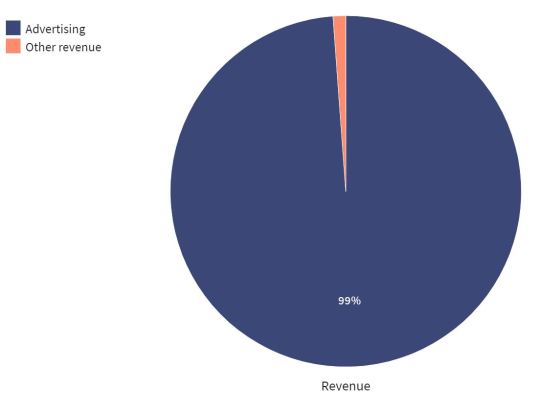
The Instagram purchase was a risk. During an interview Steve Henn from NPR quotes Josh Bernoff as saying, “a few years from now, it will be abundantly clear to those investors whether this was another brilliant business decision or Mark Zuckerberg's first big mistake.” Clearly this move was not a mistake and now the question is should Facebook be punished for being good at what they do? Should companies face negative publicity for taking risks that other companies would not. I think of how far Facebook and Instagram have come since 2012 and it’s hard to imagine them being as successful apart as they are together.

It is one thing to hate on Facebook because of their lax privacy policies, campaign influence policies, or Mark Zuckerberg’s past sins during his start up, but it’s another to thing to dismember a corporation because they’re the best at what they do. Competition laws always face these types of dilemmas. It’s up to the government and states to provide the evidence that their whole strategy was to become a monopoly to intentionally crush the competition vs a company that made sound investing decisions when others would not.
https://www.statista.com/statistics/268604/annual-revenue-of-facebook/#:~:text=In%202019%2C%20Facebook's%20revenue%20amounted,of%20income%20is%20digital%20advertising.
https://www.statista.com/statistics/268604/annual-revenue-of-facebook/#:~:text=In%202019%2C%20Facebook's%20revenue%20amounted,of%20income%20is%20digital%20advertising.
https://www.investopedia.com/ask/answers/120114/how-does-facebook-fb-make-money.asp#:~:text=Facebook%20sells%20ads%20on%20social,by%20the%20COVID%2D19%20pandemic.
https://en.wikipedia.org/wiki/List_of_mergers_and_acquisitions_by_Facebook
https://www.npr.org/2012/04/10/150372288/instagram-sells-for-1-billion-despite-no-revenue
https://www.nytimes.com/2019/05/09/opinion/sunday/chris-hughes-facebook-zuckerberg.html
1 note
·
View note
Text
VR/AR Applications in Business
Holograms used to be something just found in Star Wars movies, but thanks to virtual reality and augmented reality, holograms are becoming a real part of the workplace in many industries.

Imagine you are an architect and you’re in a meeting. In front of you is a three-dimensional version of the skyscraper you plan to build and on your right, is a set of notes outlining your team’s goals for the upcoming month. Around the hologram of your building are your teammates, each with their own notes on what they want to do in the project. When the meeting is over, you take off your virtual reality headset and see that you’re alone in your office. The people you were talking to are miles away.

Thanks to virtual reality, you were able to share three-dimensional images and graphs, and have a much more communicative experience with your team then if you were just talking on the phone or even seeing each other in person. Hyundai recognized the value of virtual reality and implemented a virtual reality auditorium that enables engineers around the world to work simultaneously on the same model. U.K.’s Ministry of Defense conducted its first virtual reality collaboration with personnel at various laboratories to work on the design of an aircraft engine. Other industries where virtual and augmented reality are making an impact include art modeling, healthcare, architecture, and graphic design. If a correct visual representation of a product means success for that industry, chances are that the major players in that market are thinking about or have implemented virtual reality or augmented reality into their value chain. But product design isn’t the only application for virtual reality in the workplace.

The image above shows Walmart using virtual reality to train its associates at one of its Walmart Academies in September 2018. The headsets are used to train Walmart employees in three areas; new technology, soft skills (like empathy and customer service), and compliance.
In a pilot test in the summer of 2018, 10 Walmart stores used VR for training on new Pickup Tower units in their stores. VR allowed Walmart associates to be trained before the towers were even installed. Walmart also uses virtual reality to create virtual environments where trainees can be tested on how they interact with customers. Costly, difficult, or even impossible customer scenarios to replicate have been brought to life thanks to virtual reality. Thanks to the new technology, Walmart has been able to build confidence in its associates and increase its employee retention rates substantially. The oculus VR headset above was used by Walmart to train more than 1 million associates across the United States last year.
Other companies have been using VR to train their employees for all kinds of situations. BP uses VR to train their employees for emergency situations and ExxonMobil is using VR for safety training as well. The image below shows Kentucky Fried Chicken’s VR program, which is used to train its employees on how to prepare their fried chicken. These examples show that companies are realizing that putting employees in simulated environments where they can master safety procedures has the potential to save lives and prevent injuries, which I think is extremely valuable feature that companies really haven’t had in the past.

Virtual reality is being used for talent acquisition as well. VR lets those going through the recruiting process to experience their possible future career hands-on and in a deeply immersive way so that they can really see if the job is a good fit. By seeing the day-to-day responsibilities, potential hires can get a glimpse into what the job is actually like and decide from there where they want their career to go. If they don’t like what they see, they can make the decision then before making a life-altering decision.
From 2012 to 2017, the number of VR companies has grown by 250%. Just to give a better picture on how valuable the VR market is, in 2014, Facebook paid $2 billion for Oculus VR, a startup that was making virtual reality video games. VR/AR is here and it’s growing, and I personally believe that we’ll be seeing more applications of VR in different areas of business in the future.
Sources:
https://www.dailydot.com/debug/vr-workplace-productivity/
https://corporate.walmart.com/newsroom/innovation/20180920/how-vr-is-transforming-the-way-we-train-associates
https://www.forbes.com/sites/sarahlandrum/2017/07/27/4-ways-virtual-reality-is-revolutionizing-the-workplace/#366691281943
https://www.inc.com/steve-kovach/facebook-buys-oculus-vr.html
https://corporate.walmart.com/newsroom/innovation/20180405/hundreds-more-high-tech-pickup-towers-are-headed-your-way
4 notes
·
View notes
Text
The ‘new’ google that plants trees | Sabrina Didizian
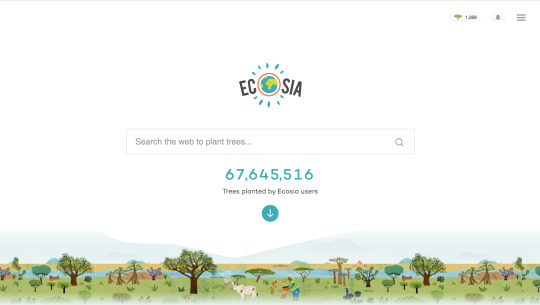
We are all so used to Googling that it has become part of our everyday vocabulary. We have even made “google” a verb! But what if there were a platform that acted almost exactly the same as Google, but did something a little extra, like planting trees with every search? Well, this platform actually does exist, and it’s called ‘Ecosia’! With all the news about climate change and the burning Amazon rainforest, it can be difficult for the everyday person to feel like they can make a difference in the face of the threat of climate change. But Ecosia makes what most people do every single day (i.e. look things up) have a greater impact without us even trying.
Ecosia is based out of Berlin, Germany, and was founded by Christian Kroll who was travelling around Nepal and South America to try to discover what he wanted to do with his life. He had a real desire to solve social problems and it eventually turned into a concrete idea, which later developed into Ecosia. Ecosia launched in Devember 2009 and by 2011, it had raised over €250,000. And in June 2019, so only a few months ago, 60 million tress had been planted by Ecosia (currently around 67 million) which is a huge milestone!

It is actually quite a simple model for how Ecosia generates the money to plant the trees - they make their month through their search ads and they use *)% of the profits from the advertising revenue to supports their tree planting projects. The rest is put into backup reserves for unforeseen circumstances, and if these reserves are not used, they are channelled back into Ecosia’s tree planting fund. Ecosia began funding reforestation in Burkia Faso in 2015 as part of the Great Green Wall projects, which was backed by the African Union and the World Bank, that aims to prevent desertification.

As of April 2016, Ecosia is ranked in the top 2 start-ups for Germany in the StartupRanking, and as of October 2018, it has reached 7 million active monthly users. The following countries are where Ecosia currently has one of more projects:
Peru, Nicaragua, Colombia, Haiti, Brazil, Morocco, Spain, Senegal, Burkina Faso, Ghana, Madagascar, Uganda, Tanzania, Ethiopia, Kenya and Indonesia!!
One really cool and inspiring aspect about Ecosia is that it publishes its monthly financial report on its website. On the website, it states “We love being transparent with you. That’s why we publish monthly financial reports and tree-planting receipts. These show exactly how much money we made from your searches, and what percentage of our revenue went towards trees”. Ecosia also doesn’t pay out dividends to the owners, and all the profits stay within the company and will eventually be invested or used for tree planting. Founder and CEO Kroll actually announced that he has given part of his shares over to the Purpose Foundation. By doing this, Kroll and co-owner Tim Schumacher gave up their right to sell Ecosia or take any profits out of the company.

As someone who is really passionate about sustainability and doing whatever I can to do my part and make a difference for our planet, I think Ecosia is an aspirational company that uses technology and the internet for a greater purpose. With the aim to do something meaningful with his life in his career, Kroll founded Ecosia, which is something I look up to. Their transparency with regards to their profits and efforts has inspired me to hopefully crate a business of my own one day that has a greater purpose at the heart of it and that uses tech for the greater good.
The question is - will they ever be able to reach Google’s level? Or will Google ever be inspired by their actions and purpose to do something similar with their business model. I feel like it is not even a question of whether Google is able to, but more if they are willing to...
Here I’ve linked a video from Ecosia’s YouTube channel about “How 50 million trees have changed the world”:
https://www.youtube.com/watch?v=qk5erQLu8to
https://info.ecosia.org/about
https://en.wikipedia.org/wiki/Ecosia
2 notes
·
View notes
Text
The Rise of Social Media in Marketing. A New and Better Relationship Between Consumers and Advertisers
After reading the Forbes article “What 10 Social Media Professionals Say Should Be Your Top Priority Right Now” it is abundantly clear that social media is currently amongst the best ways to market to and understand your consumers. This 21st-century phenomenon is forcing marketers and advertisers to integrate social media as a vital part of their business strategies. Neal Schaffer even suggests that the power and influence of a brand will pale in comparison to “social media algorithms”.
Why is this happening? Samantha Kelly and I would agree that consumers have become fed up with conventional forms because they make them feel dehumanized. In 2017, over 180 billion US dollars was spent on advertising and this is a trend that spans back decades(https://www.statista.com/statistics/236958/advertising-spending-in-the-us/) . All of the money put towards advertisements is meant to sway or manipulate consumers into liking, buying, or talking about their product. Hundreds of billions of dollars are being spent on people like you and me. I would rather buy/ support products on my own volition than being subliminally swindled by a marketers tricks. People do not want to feel like pieces of meat, they want to feel like human being and would much rather trust the brands they are supporting than experiencing buyers remorse every time a purchase is made.

With so little faith in traditional means of advertising, marketers have pinpointed a very vulnerable part of modern life: social media. So much content is being consumed on a daily basis across facebook, twitter, snapchat, and Instagram just to name the big ones. People are actually going to these sources for their daily dose of news and pop-culture which could have never been foreseen 15 years ago when myspace was still a thing. This will have widespread repercussions for journalism and entertainment, but for advertisers and brands is a new, potential source of revenue.

As consumers, we have come to crave “real experiences” with brands instead of just feeling taken advantage of. With all the data, money, and technology these being companies have its easy for consumers to feel like small little pawns in a much greater scheme that is benefitting the corporate fat-cats (https://www.forbes.com/sites/dangingiss/2018/07/16/what-10-social-media-professionals-say-should-be-your-top-priority-right-now/#22ac5ce631d2). Advertisers and marketers have been forced to look to a new means of getting through to the modern consumer. Last year in my marketing class we looked at an interesting marketing campaign made by Procter and Gamble during the most previous winter Olympics(https://www.youtube.com/watch?v=rdQrwBVRzEg) .

The entire commercial was about the importance of mom’s in Olympic athletes lives. It was a very sentimental and uplifting ad, but when looked at more closely has absolutely nothing to do with Procter & Gamble or any of their products. They moved the focus away from themselves and instead designed an advertisement that is a quick enjoyable 30 seconds for a consumer. The commercial curried favor from many of my classmates, but as a consumer, I always have my guard up and took objection to Procter and Gamble's marketing ploy. The commercial ends with the words, “ Procter & Gamble, a proud sponsor of moms”. While some consumers saw this ad as a more emotional, or “real experience” than most commercials, I saw it as a massive company using the hard work of moms to manipulate viewers into appreciating their brand more. They spoke nothing of supporting moms through initiatives or aiding athletes with financially struggling families. They are taking something beautiful and using it for their profit which deters me as a consumer. Where Procter and Gamble made their mistake, as I see it, was that they were running a campaign, instead of making an ongoing effort((https://www.forbes.com/sites/dangingiss/2018/07/16/what-10-social-media-professionals-say-should-be-your-top-priority-right-now/#22ac5ce631d2). Neal Schaeffer sees this as a critical error to be made in modern marketing. He says brands can gain the trust of consumers in the social media sphere by showing a consistent commitment to their consumers and cause, not just running a campaign every time the Olympics rolls around. They need to actually engrain themselves within these social communities where trust and information are shared between brands and consumers peacefully. In this way, they will not only better understand their consumers, but be in a place where they could be more understood as brands.

4 notes
·
View notes
Text
Why Privacy Issues Don’t Bother Most Chinese by Tristar To
Over the past few months, there has been a lot of controversy in America concerning data privacy with tech-giants, such as Google and Facebook. Both had to pay multi-billion dollar fines, which broke records for the biggest monetary penalties. It’s clear that in America, people currently do not like giving away too much information about themselves, but rather live more private lives. However, it is a different story in China. For now at least, Chinese citizens are embracing social-credit systems that can foster greater trust between people and businesses.
In one Chinese city, the local government court system launched a smart-phone based map that displays the location and identity of anyone within 500 meters who’s landed on a government creditworthiness blacklist. This is like Apple’s Find My Friends on steroids. Known as the Deadbeat Map, this app provides pinpoint confirmation, the ability to share that information through social media and, a reporting function to notify the authorities. In other words, you can use this app to find out if the person next to you has an unpaid court-approved fine. In America, having this app and these features right now would be viewed as scary and a huge violation of people’s privacy. On the other hand, it seems to be quite tolerable, and even popular in China.

China has already embraced a whole range of private and government systems that gather, aggregate, and distribute records of digital and offline behavior. Even though this is depicted as a creepy digital system, this network is seen within China a a means to generate something the country lacks: trust. In order to achieve more trust, China views the constant surveillance and the loss of privacy as a small price to pay.

Why does China have so much distrust? Well similar to many developing countries, China’s economic growth has outpaced its ability to create and police institutions that promote trust between citizens and businesses. For example, a decade after Chinese milk producers were revealed to be adulterating infant formula, Chinese parents still shun the country’s dairy industry. China also remains the counterfeiting capital of the world. Some of its most recognizable companies, such Alibaba Group Holding Ltd., are known as thriving markets for fakes, thereby undermining the credibility of Chinese e-commerce in general.
Trust between individuals isn’t much better. Scams and frauds targeting individuals and families are daily fodder on Chinese news programs. This contributes to a general mood of suspiciousness. These issues are viewed more than a social problem for the Chinese government. Since China aspire to build a “consumption-based” economy, consumers need access to credit. Accordingly, China launched a roadmap for establishing a “social-credit system” with mechanisms for “rewarding trustworthiness and punishing untrustworthiness.” Today there are more than 40 social-credit systems operating in China. Some are ran by the government, such as national list of individuals who have defaulted on court judgments. Those on this list are restricted from a variety of activities, such as staying at luxury hotels to enrolling their children in expensive schools.

Surveys have shown that these social-credit systems have been very popular so far instead of receiving public outrage. Support for such systems corresponds closely to those who perceive they’ve received some benefit from them. Whether it be a loan, the ability to rent a car or share a bicycle without having to pay a deposit, or the chance to evaluate the creditworthiness of someone on a dating app. Especially in China where the value of privacy isn’t very high, the quality of life improvements are viewed as being very much worth the erosion of privacy. However, I think it is important to be aware that public opinions can change or alter anytime. It is possible that many citizens have not thought through the implications of having their lives recorded in such detail. I don’t think anyone, even if they are conditioned to an authoritarian government, want their life to be dictated by a score or rating. By using social media embarrassment to motivate people to be more responsible and potentially using technology to consolidate some social-credit systems, the Deadbeat Map app can continue to be successful in the future and hopefully solve China’s problem of having mutual mistrust between citizens.
Source:
https://www.bloomberg.com/opinion/articles/2019-01-24/why-china-s-social-credit-systems-are-surprisingly-popular?cmpid=socialflow-twitter-business&utm_medium=social&utm_campaign=socialflow-organic&utm_source=twitter&utm_content=business
0 notes